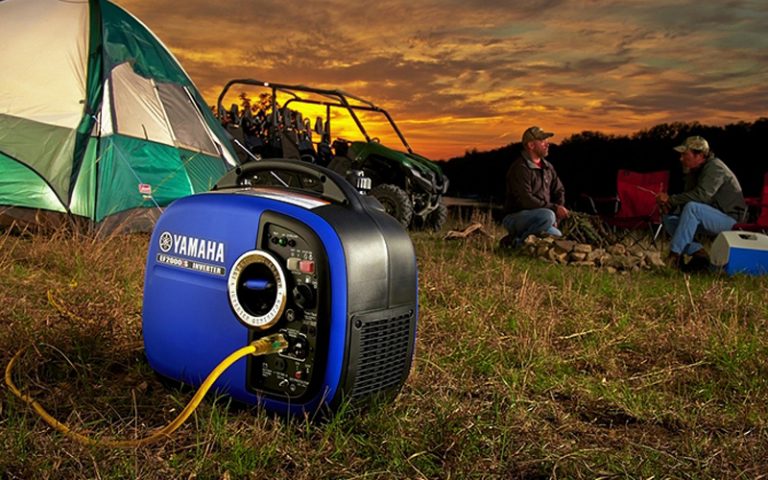How Safe Are Infant Life Jackets?
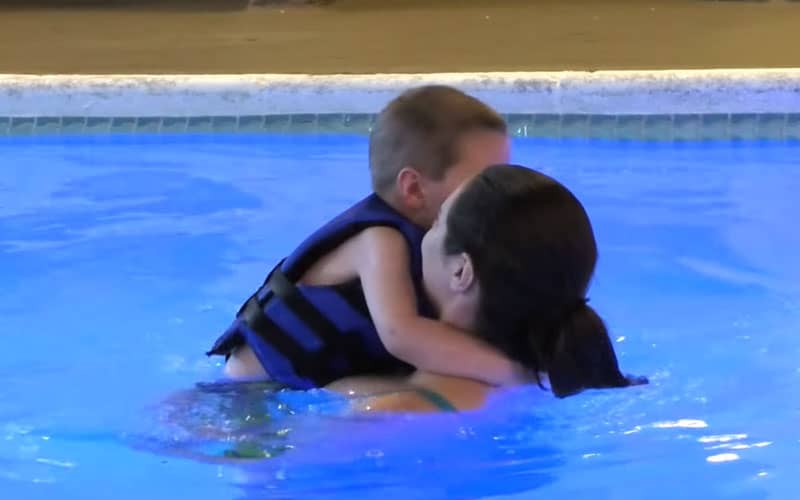
Share this article:
TopNotch Outdoor is independent – we research, test, and rate the top products to help you make the right buying choice. We sometimes use affiliate links and may receive a small commission on your purchase. Learn more…
Summer outing…boating…swimming. Sounds like big fat fun!
But do you know that drowning is in the top 3 causes of death due to unintentional injury worldwide… and that children aged 1-4 years old have the highest rate of drowning deaths?
Now, truly sorry but it can happen to anyone and you need to know.
But hold on.
How Safe Are Infant Life Jackets?
This doesn’t mean you can’t enjoy water activities with your baby anymore.
That’s what an infant life jacket is for!
Life jackets or a life vest – whatever you call it, we will discuss them all here, along with the most important safety measures and other information you need to know so you can preserve your little ones’ life while letting them enjoy life to the fullest.
Ready?
Let’s dive in!
What is an Infant Life Jacket?
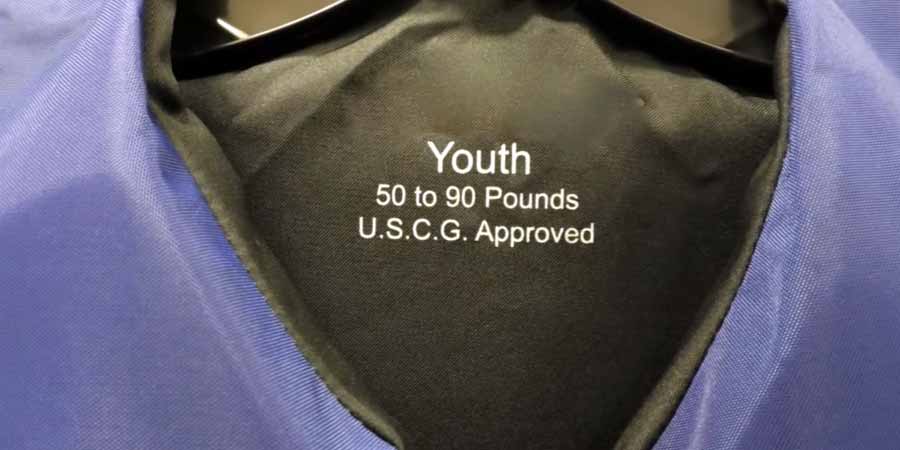
An infant life jacket is a personal flotation device (PFD) that lets your infant float safely in the water.
The right life jacket has head support that will flip the baby’s head and face-up while floating to avoid drowning.
The first thing that you should look out for when getting the best infant life jackets for your little tyke is a seal that shows that the PFD is USCG approved.
That lets you know that you can rest well knowing that the life vest you bought will hold your baby in safety when unexpected accidents happen.
Before we move on…
If you’re planning to buy life jackets for the baby and the family, knowing the types of life vest would definitely help.
Type I Life jacket
This type is best for offshore activities in the rough, open water far from safety where a quick rescue is highly unlikely.
It’s designed with head support that flips the wearer around when subconscious so the face is facing upwards.
This life jacket can also retain heat for longer than other life jackets because of additional foam and fabric but that also makes it bulkier and heavier.
Its minimum buoyancy is for
Type II Life jacket
Now, this is a lightweight and easier-to-access version of the Type I life jacket.
It’s meant to be used in inland waters that are calm and not rough. This type is comfortable enough for a child to wear but isn’t advised to be worn in rough waters.
While some type II life vests also feature an oversized collar, most of them don’t have one so it’s always best to test them out before settling in.
Type III Life jacket
This type is the most lightweight among the 3, so it’s also the least safe.
The type III life vest is meant for use in inland water that is protected and near the shore. It’s also not designed to turn an unconscious wearer face-up.
So what’s the best baby life jacket?
In reality, there are 5 types of life vests set by the US coast guard but only types I to III are recommended for children.
The type II device is the type most commonly made for infants and children.
Type I would be perfectly safe but is also too heavy and a bit bulky for your baby whereas type III is not for extended stay offshore as it’s way too light.
Life Jackets vs Floaties
Floaties…I’m sure most parents will agree that these are the most commonly bought personal flotation devices for babies today.
They’re cute. They’re colorful and children love wearing them.
But according to the American Academy of Pediatrics, floaties shouldn’t be substitutes for US coast guard approved life jackets and they can give children and parents a false sense of security.
Moreover…
As Professor Linda Quan, M.D. of Pediatrics at the University of Washington School of Medicine said, “If it inflates, it can deflate.”
Floaties are a great basic safety gear for swim lessons but not for boating, kayaking, or cruising.
Now that we have the basics, let’s move on to the most important factors and reminders in buying a life jacket for your infant.
1. Always buy a NEW newborn life vest
Sure, you can save more money by getting a 2nd hand life vest. But will it keep your baby safe completely?
While these jackets can last up to 5 to 10 years, their benefits can be void if they underwent repair or alteration.
The same goes for being used in the heat or under the sun for long periods of time for it damages the foam inside and makes the jacket “brittle”.
It’s always best to get your baby a new life jacket especially if going to an offshore activity.
2. Approved by US Coast Guard
If you’re aiming for ultimate safety for the baby, the jacket must have Coast Guard approval. You’ll see it in the US Coast Guard approved type logo stamped in the PFD that lets you know that it met the standard requirements set by the USCG and that it’s perfectly safe.
3. Must have the proper fit for newborns
While it’s always a good idea to get one size up when shopping for clothes, that should never be the case for when your young child has to wear a life jacket.
Always make sure that the PFD has the perfect fit for your baby, more more and no less.
That’s why bringing your little one with you when buying one is imperative so you can test it out.
You’d know that the infant life vest is a perfect and safe fit when you pull baby up wearing the jacket and the child’s chin and ears don’t slip down through the vest.
Leg straps, along with a grab strap, and a good head and neck support are just some of the basic safety features a USCG-approved infant vest should feature.
4. Perform the float test
After getting a snug fit full throttle infant vest, be extra safe and perform a float test, too.
You can do this by fastening the vest up on your baby and very carefully putting the little one on the water face down (you can do this without submerging the baby’s face).
The vest should immediately turn the body around facing up.
But if it doesn’t do that, replace the vest because it’s unsafe for your infant.
5. Has all built-in safety features
As briefly mentioned above, a good USCG life vest should have built-in safety features such as the leg strap, durable nylon shell, and a very convenient grab strap. Here are some to guide you through.
Crotch strap
A classic life jacket for young children should have a crotch strap.
Aside from keeping the vest perfectly fastened to the baby’s body, crotch straps make sure that the PFD won’t ride up the baby and let the little one slip out.
Flotation collar
Just because your baby is wearing a PFD doesn’t mean that he/she is already safe. It should have excellent head support and you can get this from the flotation collar.
It’s extra head support that holds the child’s head out of the water and also keeps the infant from having their face be submerged in water.
Grab handle
A grab handle or also called a rescue handle should always be a part of your baby’s PFD. This will enable you to quickly and instantly rescue them by grabbing this strap in case of any accidental falls.
Rules for Boating with a Baby
While there’s no law or regulation that forbids you to take an infant aboard a ship or a boat, the USCG Office of Boating Safety reminds us that a child’s weight should be at least 18 pounds and up and wearing a PFD for that weight.
Infants weighing the said weight are usually around 4-11 months old.
Boater Safety
When boating, your baby should be wearing a vest that is made for infants 30 pounds and below.
Aside from a safety vest, make sure to avoid resting your little tyke in a non-floating seat. Holding them tightly is always the best way to keep them safe.
Make sure to put them in a shady corner to protect them from the sun, as well.
Water Safety Tips
Adult supervision should be your number one priority when going on a water outing with the kids.
Aside from wearing a good type II life vest, The Lifesaving Society highly recommends a ratio of at least 1 adult for every two young children for supervision.
The children should be within arm’s reach of the adult and of course, wearing a vest with a built-in grab strap to immediately catch them if unexpected accidents happen.
Protect your Child with a Coast Guard Approved Infant Life Jacket
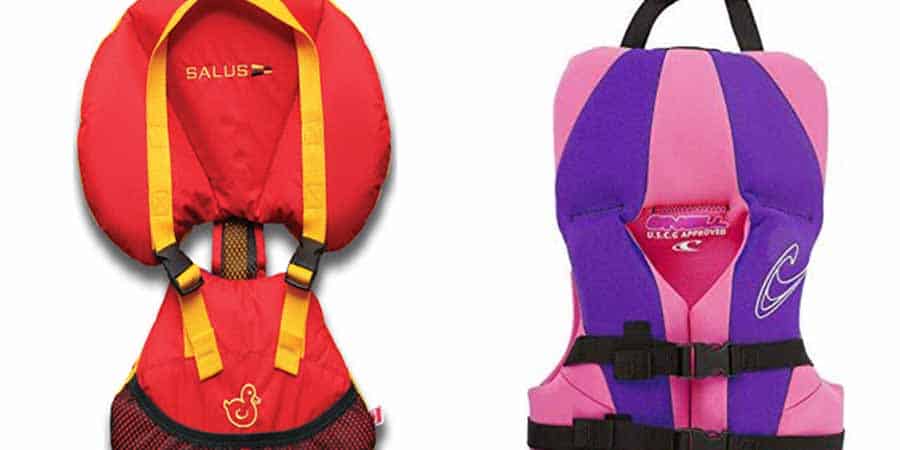
Finding the best life jackets that are USCG-approved isn’t so hard nowadays.
Some even feature extra built-in functions for a safer water adventure such as the Canadian Safe Boating Award recipient Salus Bijoux Baby Vest,
Designed for ultimate baby’s comfort, complete with a support pillow and a shoulder strap with adjustable quick release buckles, it’s a no-brainer crowd-favorite,
It also has a webbing harness system that makes sure the vest won’t get ripped out by the little one.
In addition to this…
If you want to keep your baby not only safe but cool and comfortable, find PFDs that are made with lightweight polyethylene foam such as the O’Neill Infant Superlite USCG vest with its attractive dark blue or pastel varieties and adjustable straps and waist belt.
Most of these PFDs are made for children weighing 9 to 30 pounds.
Wrapping it up…
A leg strap, grab handle, and a safety collar are just the most important features you should look out for when choosing the best PFD for your little angel.
Conclusion:
How Safe Are Infant Life Jackets
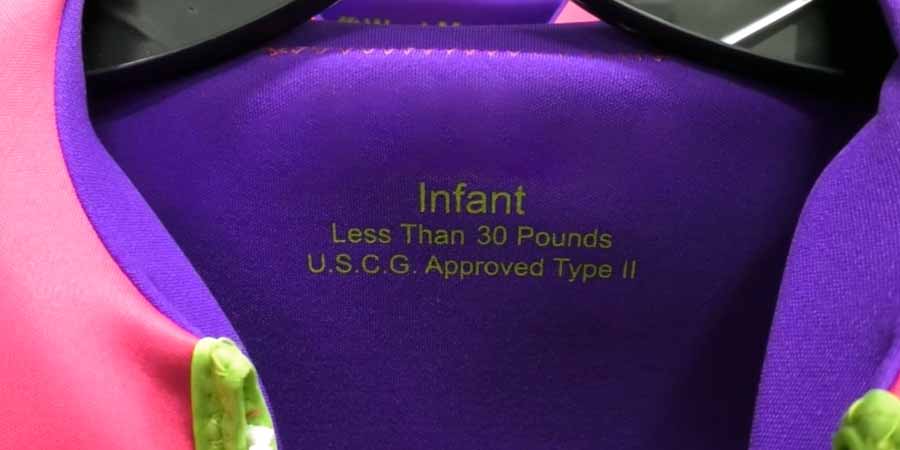
While the CG doesn’t recommend children weighing 18 pounds and below to come aboard, unexpected circumstances happen and it’s always best to be ready with a good baby life vest along with a safe baby carrier.
And you don’t need to be in a boat or at the sea to need to get one.
The simplest activities in the swimming pool in the backyard are one of the leading causes of the accidental drowning of children worldwide.
You’ll never know when danger will strike.
Infant PFDs may be a bit pricey, especially if you consider the fact that they’ll be used for just a couple of years before you’ll have to replace them again.
But I’m sure you’ll agree…
Nothing is more valuable than a life full-lived for your little angels.
Related: Best Infant Life Jacket – (2024)

![Does Kayaking Have a Weight Limit? <br>[What Size Kayak You Need] Does Kayaking Have a Weight Limit? [What Size Kayak You Need]](https://topnotchoutdoor.com/wp-content/uploads/2021/07/Does-kayaking-have-a-weight-limit-FI-768x480.jpg)
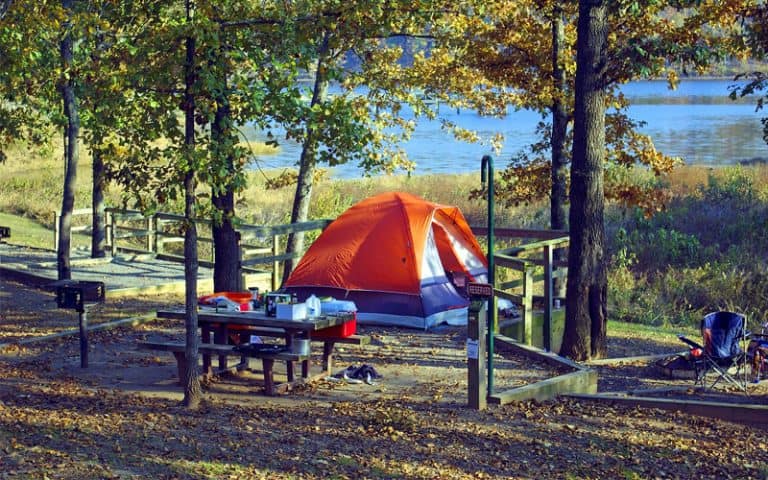
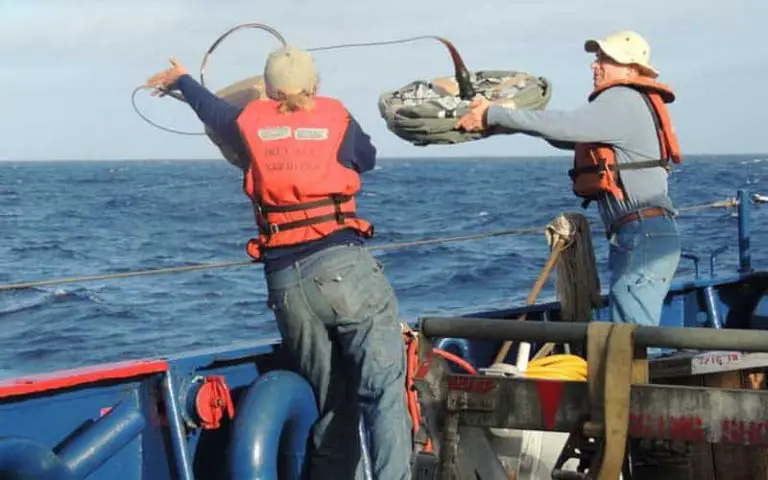
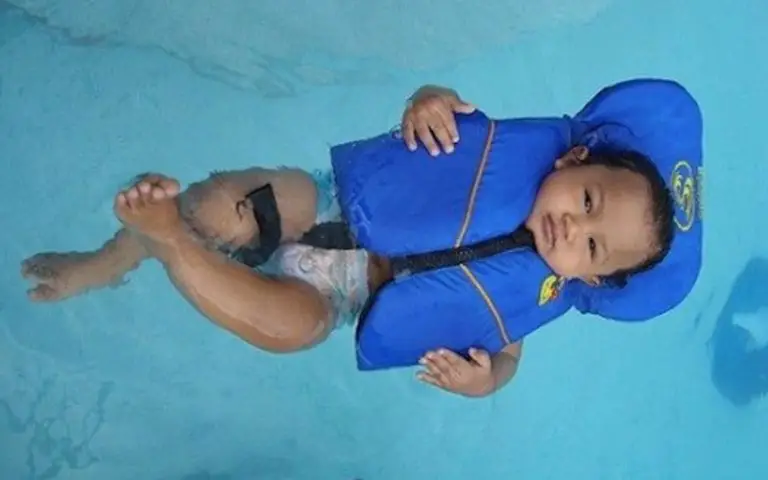
![17 Best Small Travel Trailers & Campers <br>On the Market For ([currentyear]) 17 Best Small Travel Trailers & Campers On the Market For (2024)](https://topnotchoutdoor.com/wp-content/uploads/2020/09/Travel-Trailers-FI-768x480.jpg)
